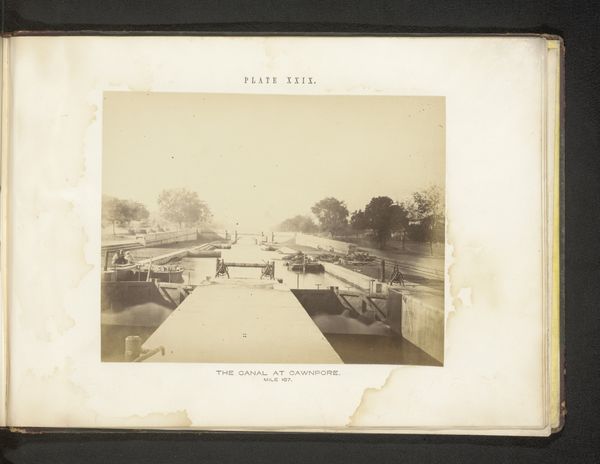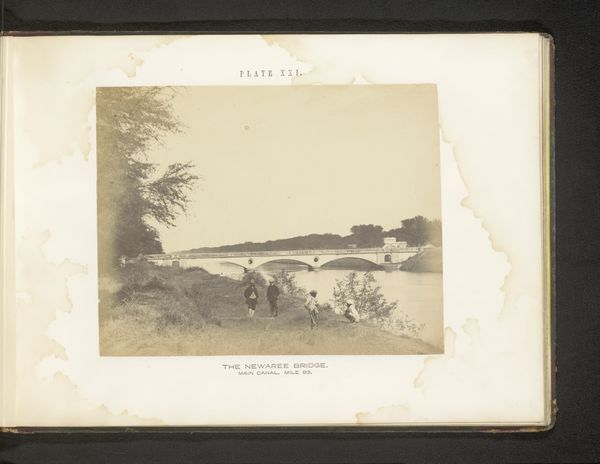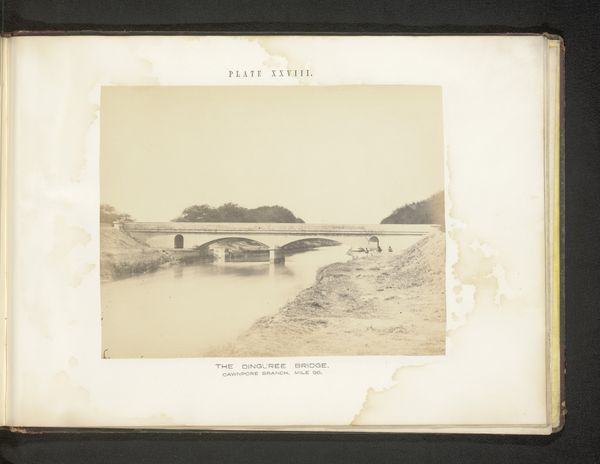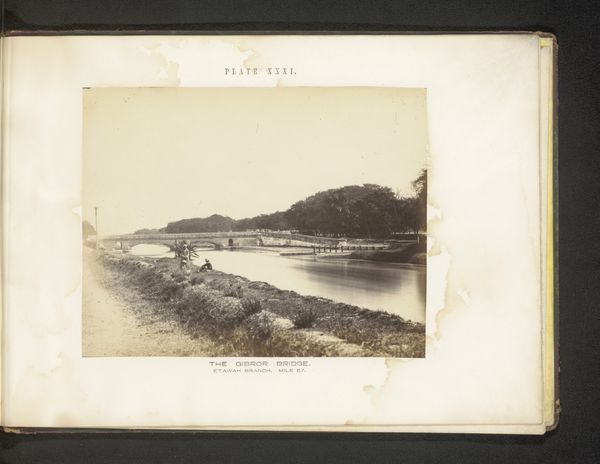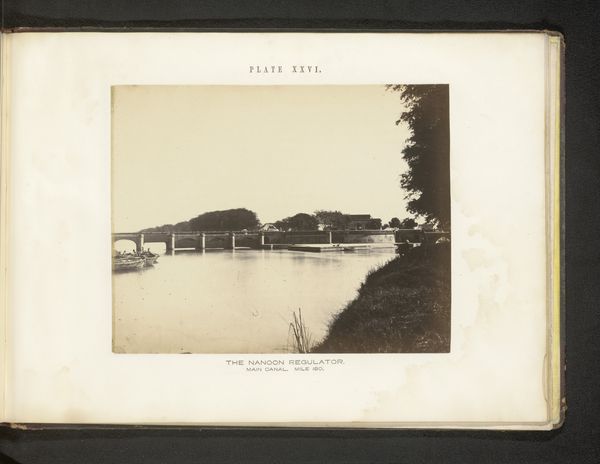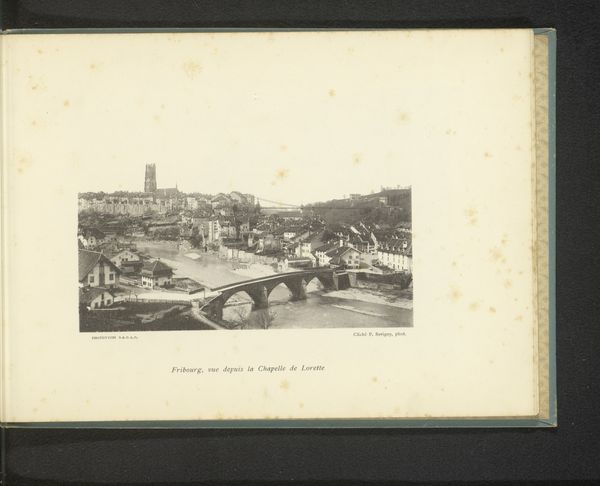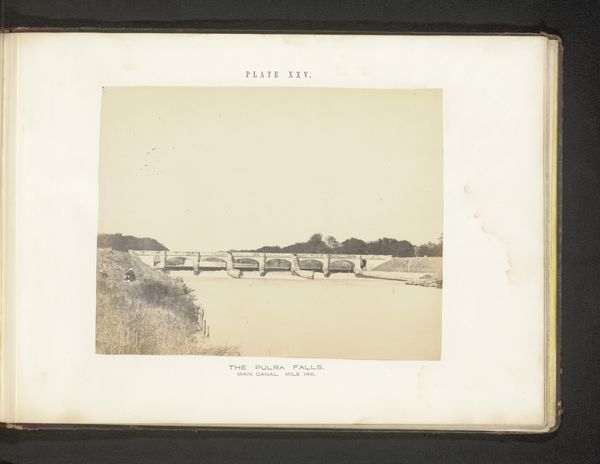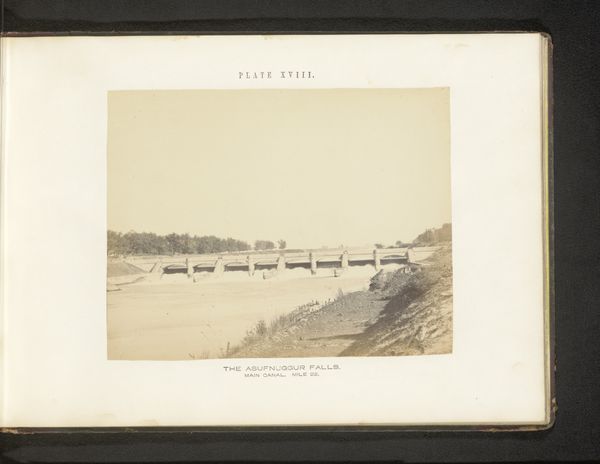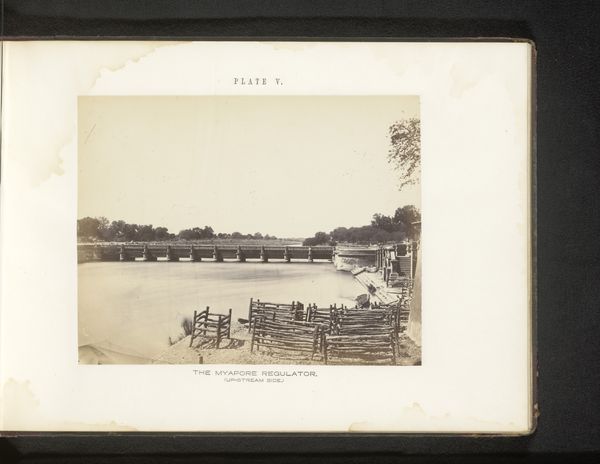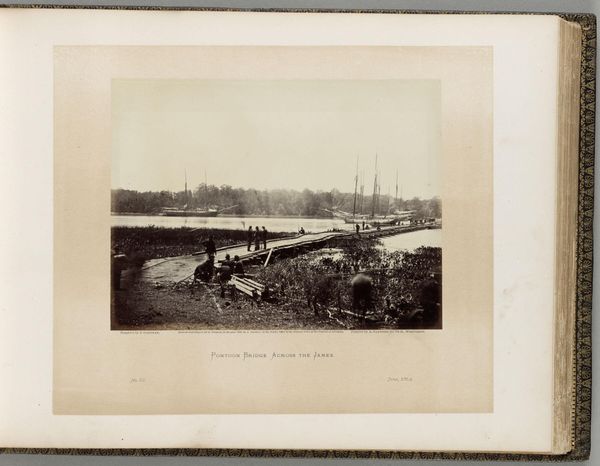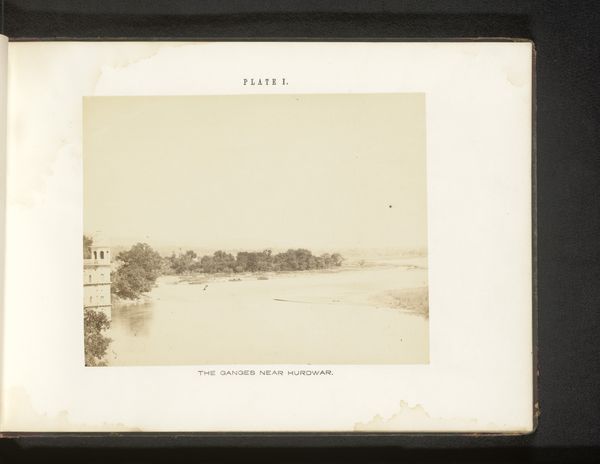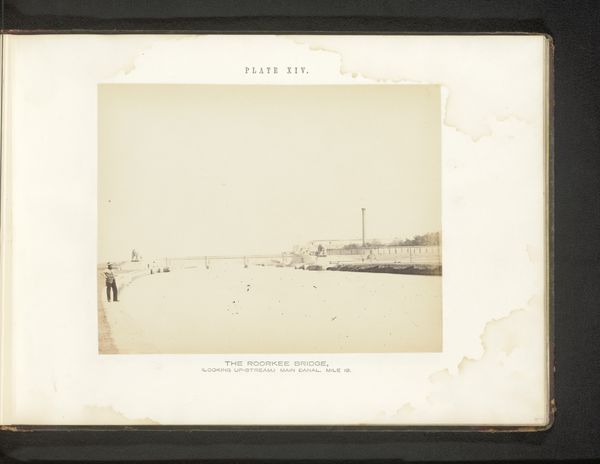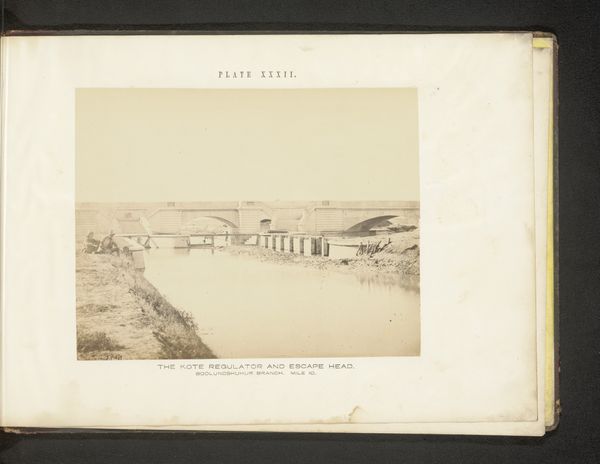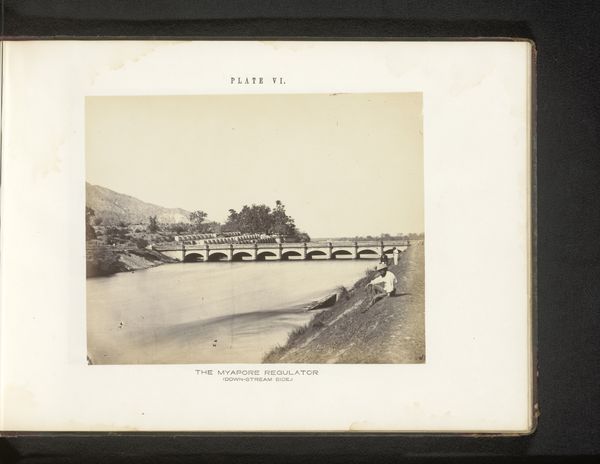
photography, gelatin-silver-print
#
photo of handprinted image
#
aged paper
#
landscape
#
street-photography
#
photography
#
gelatin-silver-print
Dimensions: height 184 mm, width 232 mm
Copyright: Rijks Museum: Open Domain
Curator: Before us is "Onbekende man bij een brug over de Ganges," or "Unknown Man by a Bridge over the Ganges," a photograph dating to before 1867. Thomas George Glover is credited as its maker, realized as a gelatin-silver print. Editor: It's evocative; a serene and quietly haunting composition. The aged paper lends an air of wistful distance. There’s a lonely stillness that’s amplified by the lone figure in the foreground. Curator: I’m immediately drawn to the materiality, the physical aging evident in the print. Gelatin silver prints, even then, would have been relatively common. So I wonder, what was Glover’s relationship to the labor of image making, the access to those resources and the role it played within the British presence in India at this time? Editor: Absolutely. And let’s think about that man by the river. He's positioned just below and to the side of the bridge, as though he's contemplating progress, or maybe even burdened by it. What's his story? And what does his relationship to that imposing structure mean? Consider, also, how his very image could become part of colonial narratives and ethnographic collections. Curator: Right, and how were these photographs, readily reproducible and seemingly objective, used in broader efforts of control and documentation. Glover probably saw the river and bridge with specific goals in mind: a kind of cataloguing of the landscape and local people. What sort of consumption and distribution did he anticipate? Editor: Indeed. And, thinking of those intended viewers, there is a definite imperial gaze in play. This image travels, carrying ideas, constructing a specific narrative. How many in Britain saw images like these and developed a concept of "India" shaped by colonial ambitions? Curator: To be able to really track this, we need to look into Glover’s entire photographic practice. If the images he made circulated within colonial administrative or commercial spheres, they were serving very clear functions. It takes on an additional resonance to consider them now. Editor: Absolutely. I am left to think of the photograph’s impact in visualizing colonial narratives and to whom they give agency. And I find myself compelled to rethink and reframe its context by centering the individual near the river, and all of the people he stands for, within a critical view of historical documentation.
Comments
No comments
Be the first to comment and join the conversation on the ultimate creative platform.
